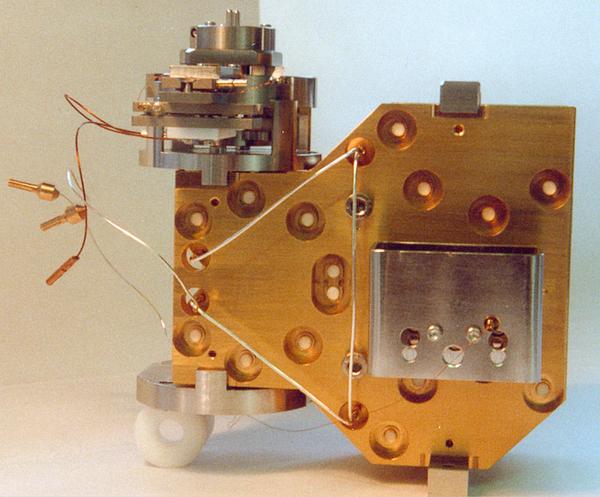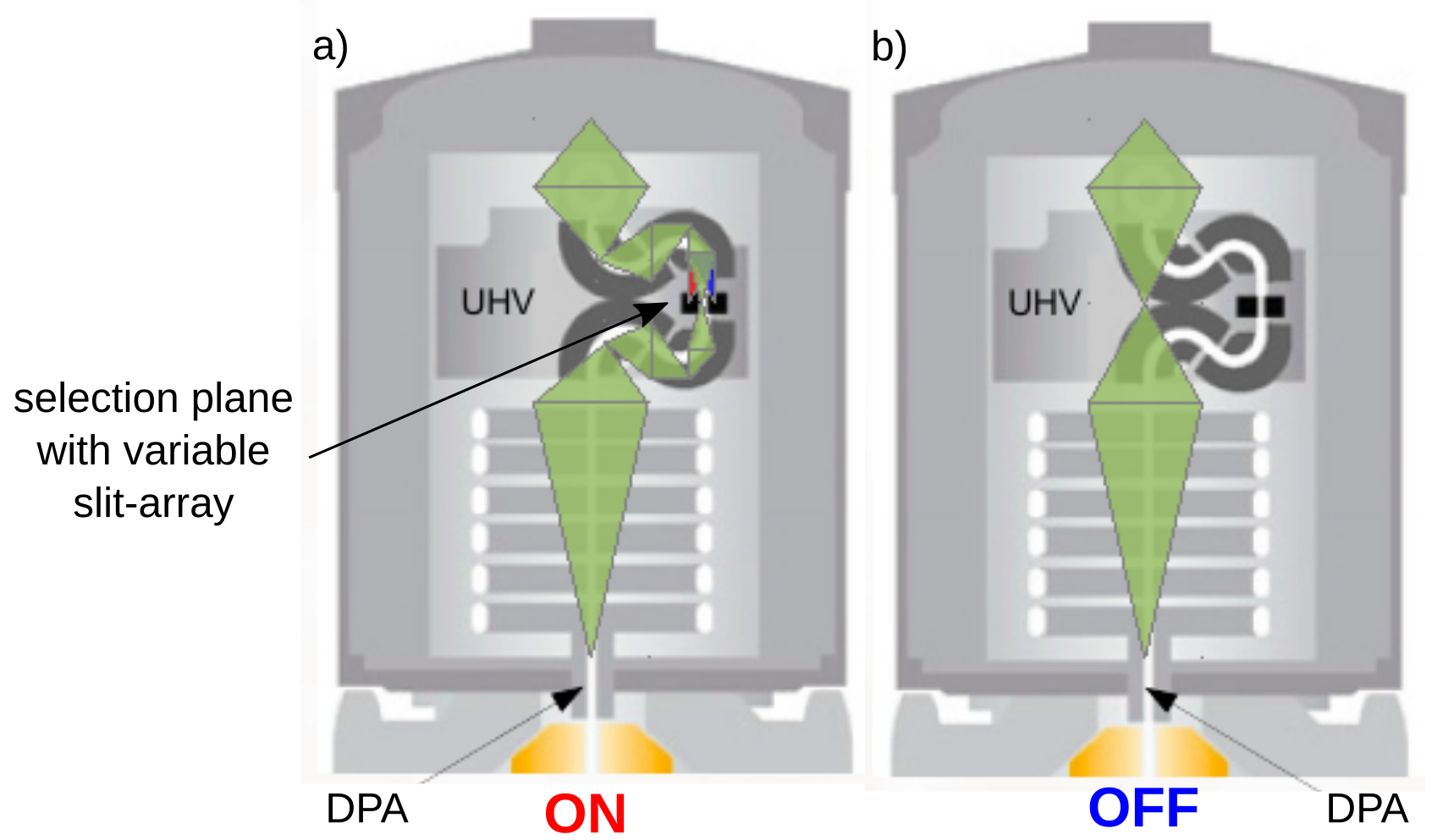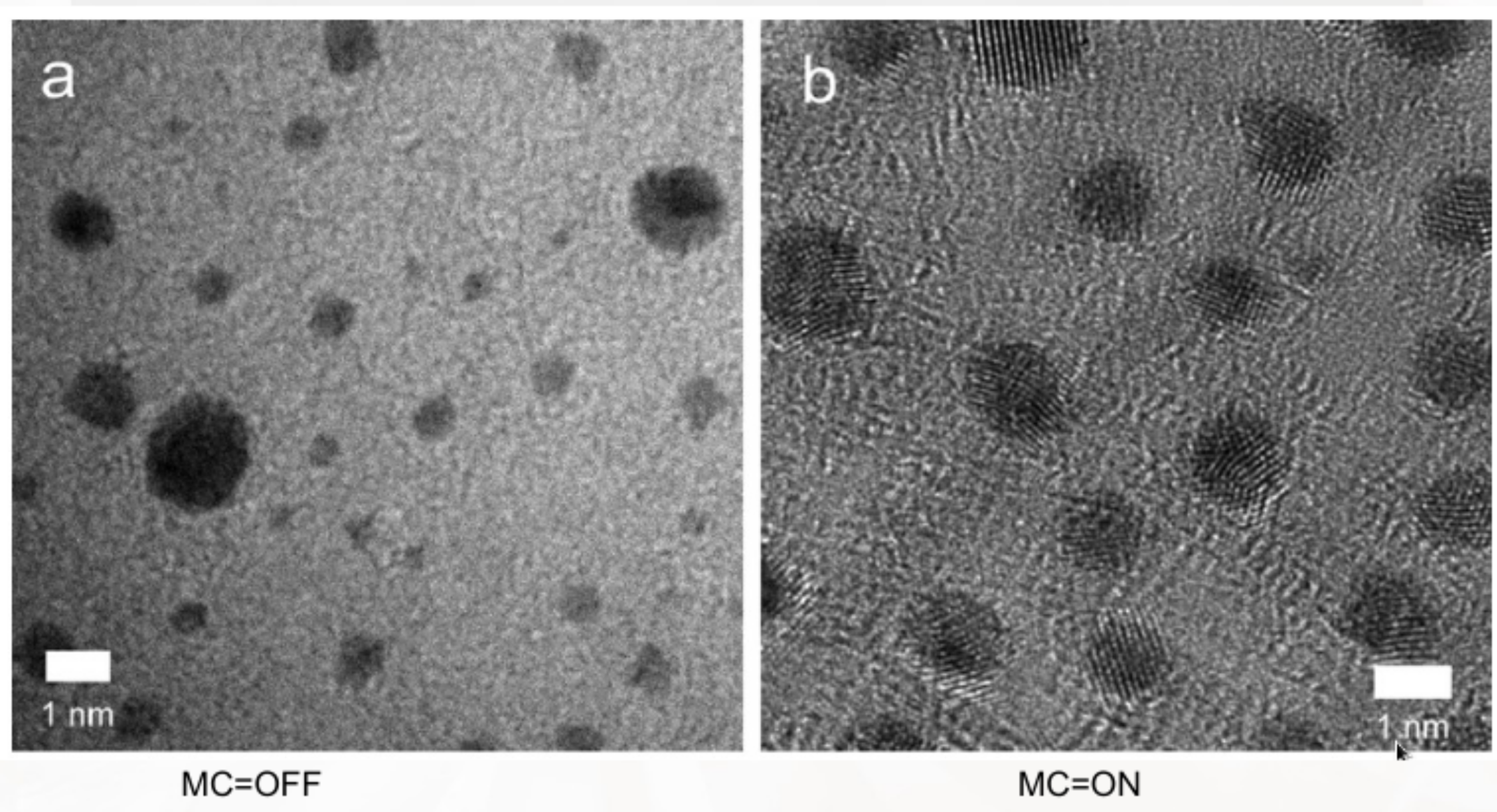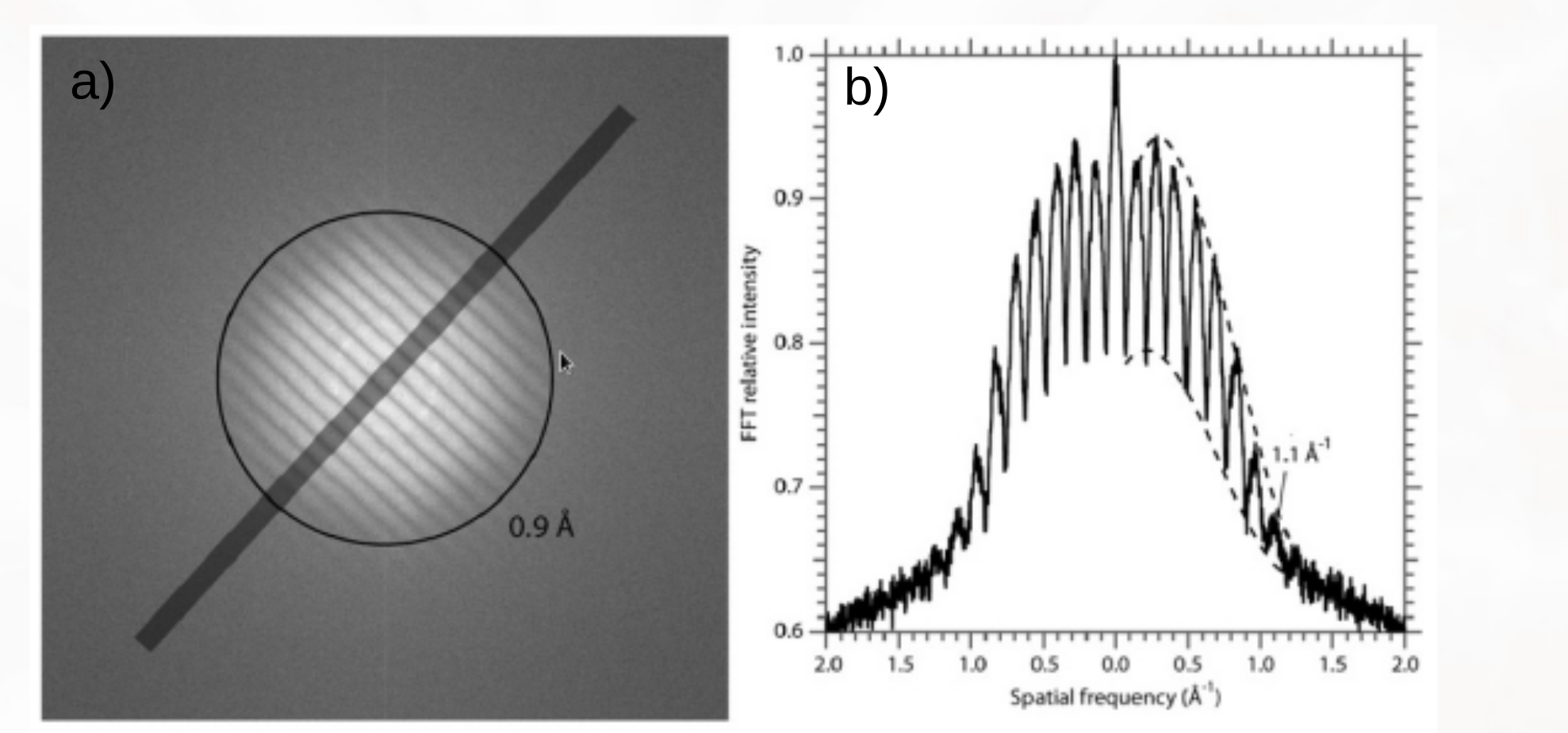Omega-Monochromator for TEM

Omega-Monochromator for TEM
The CEOS Omega-Monochromator has been designed for the use inside the electron source of a transmission electron microscope (TEM). Due to its purely electrostatic structure the monochromator is usable in ultra high vacuum (UHV) and can be driven without remanence. For an optimization of the energy width and the beam current for your application, the instrument has an movable array of slits of various sizes. Due to the high energy dispersion of 12 µm/eV which is generated in the monochromator, an energy widths of 0.7 eV (monochromator off) up to 0.05 eV (monochromator on) can be produced, without introducing disturbing aberrations. The electron beam is free of spatial- as well as angular-dispersion after leaving the monochromator. The instrument name comes from the „Ω-shaped“ beam path. This beam path is explained in more detail in fig. 1. It is easily possible to turn off the Omega-Monochromator and to use the microscope in its standard mode with a straight beam path and without remanece. Furthermore the Omega-Monochromator can be used for other types of electron beam instruments and even for ion beam applications.
Features:
- Monochromator with „Ω-shapped“ beam path and usable for the integration into the electron source of a TEM
- Movable slit aperture with different slit sizes for the optimization of the desired energy width
- An energy width between 0.7eV (Monochromator off ) up to 0.05 eV (Monochromator on) are possible due to the large energy dispersion of 12 µm/eV inside the monochromator
- No introduction of disturbing aberrations after the beam leaves the monochromator
- No spatial- or angular-dispersion after the beam leaves the monochromator
- Usable in ON and OFF mode
- Compatible with the following TEMs: Zeiss TEM Libra 200. Others on request.
Specifications:
- Device dimensions: 116 x 139 x 46 [mm]
- Mode: MC-TEM, MC-STEM, EELS (MC=monochromatic)
- High voltage range: 30 – 200 kV
Applications:
- Electron energy loss spectroscopy with highest energy resolution
- Low-voltage applications for TEM and STEM
- High-resolution TEM with improved information-limit
Contact:
Do you have any questions about the product or the application and extension for your e-beam system? Please contact us at info@ceos-gmbh.de

Fig 1:a) Omega-Monochromator on: The beam is deflected in an Ω-shaped manner forming an astigmatic image of the virtual source in the selection plane, which is the symmetry plane of the monochromator. There the beam is filtered using a slit, which is arranged parallel to the astigmatic image line. Behind the slit the beam is deflected back to the optical axis of the microscope symmetrically to the first half of the monochromator. After leaving the monochromator the beam is entirely dispersion-free, even the angular dispersion is compensated. b) Omega-Monochromator off: It is possible to switch the monochromator off and operate the microscope with a straight beam as in ordinary operation mode. The source reduction stays unaffected.

Fig. 2: Intensity distribution of Zero-Loss Peaks after passing the monochromator. A Zeiss Libra 200 MC with 0.5 µm slit array at 200 kV was used. a) and b): for image acquisition times smaller than 0.5 seconds a FWHM smaller 50 meV is possible. c) for image acquisition times larger than 100 seconds low-frequency perturbations lead to a widening of the FWHM of approximate 90 meV. Essers E, Benner G, Mandler T, Meyer S, Mittmann D, Schnell M, Höschen R. Energy resolution of an Omega-type monochromator and imaging properties of the MANDOLINE filter. Ultramicroscopy. 2010 in press.

Fig 3: 40 keV imaging of gold nano particles sputtered onto ultra-thin carbon film: (a) without the monochromator (MC) showed poor resolution with no observable lattice fringes and (b) with the monochromator with a 1mm slit allows imaging of gold lattice fringes. D.C. Bell, et al., 40 keV atomic resolution TEM, Ultramicroscopy (2012), doi:10.1016/j.ultramic.2011.12.001

Fig. 4: a) Measurement of Young’s fringe experiment at 40 kV using the 1mm monochromator slit corresponding to an energy spread of ~50 meV. b) line profile showing the corresponding measured information limit of 1.1 ̊A. D.C. Bell, et al., 40 keV atomic resolution TEM, Ultramicroscopy (2012), doi:10.1016/j.ultramic.2011.12.001

